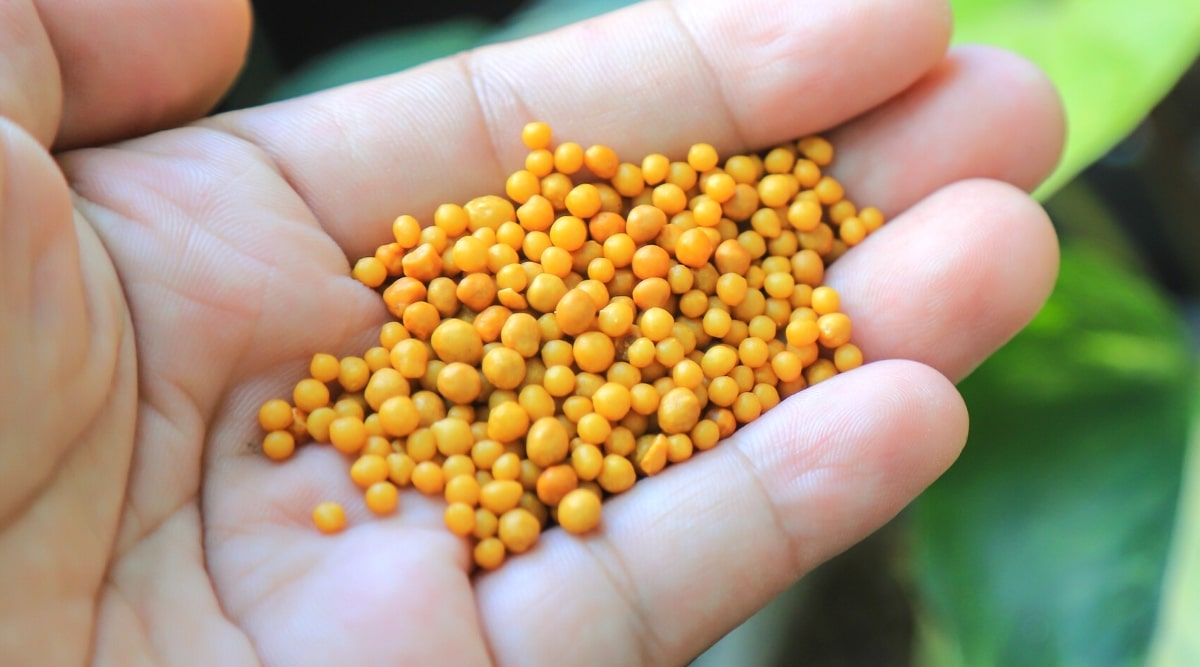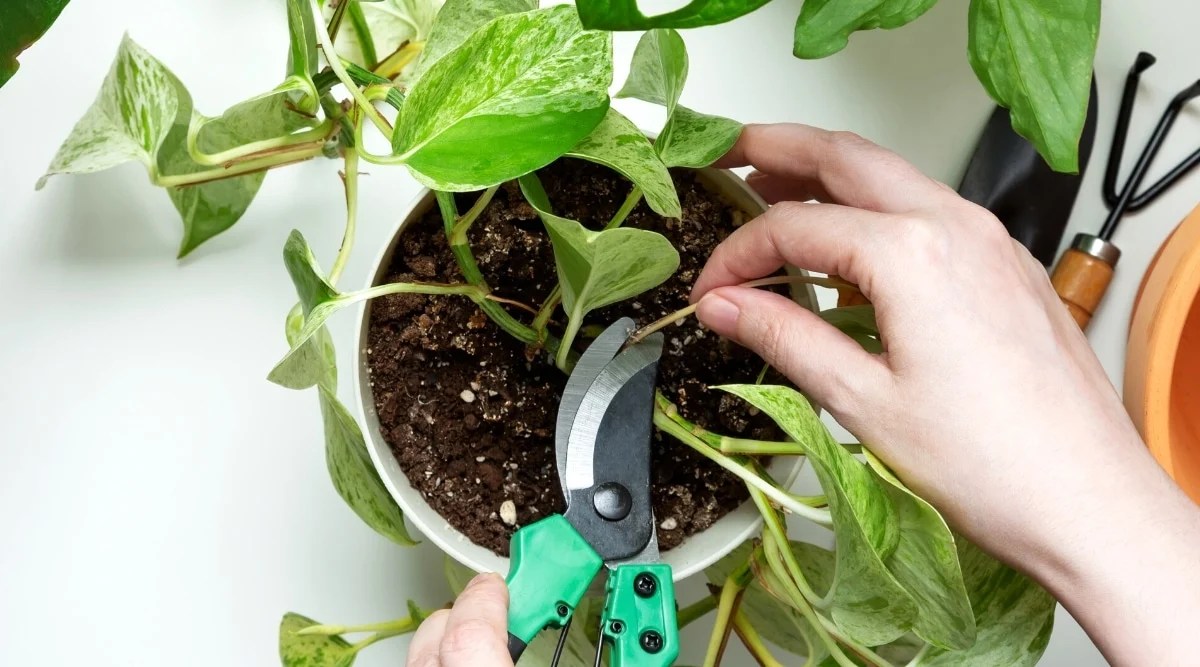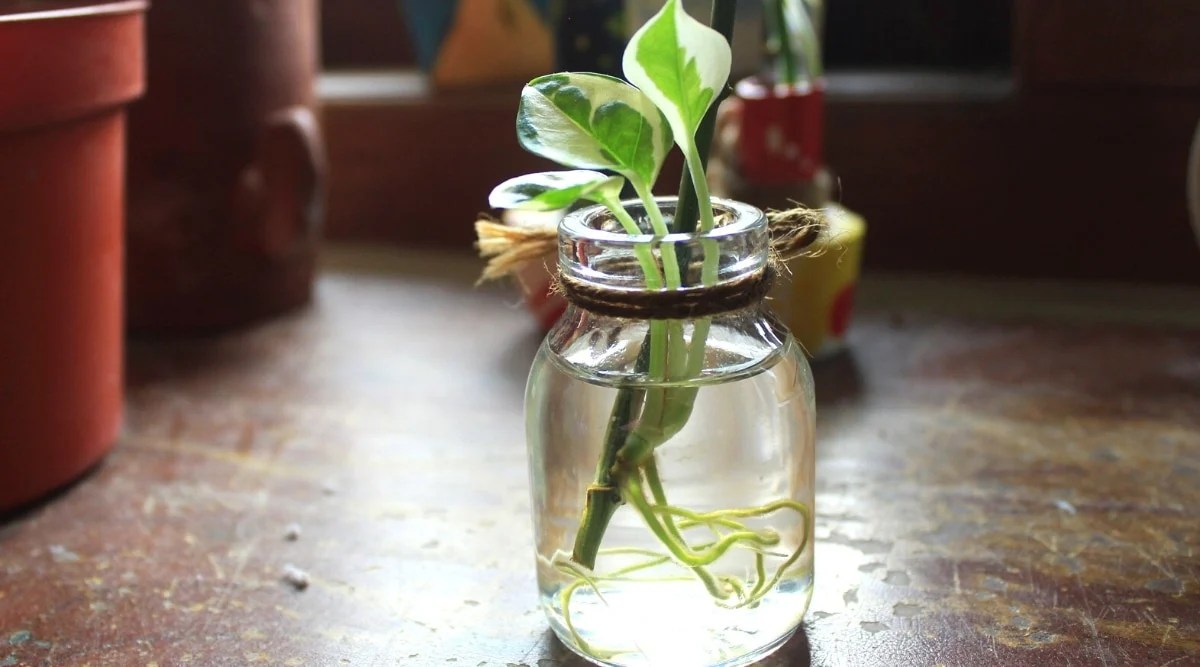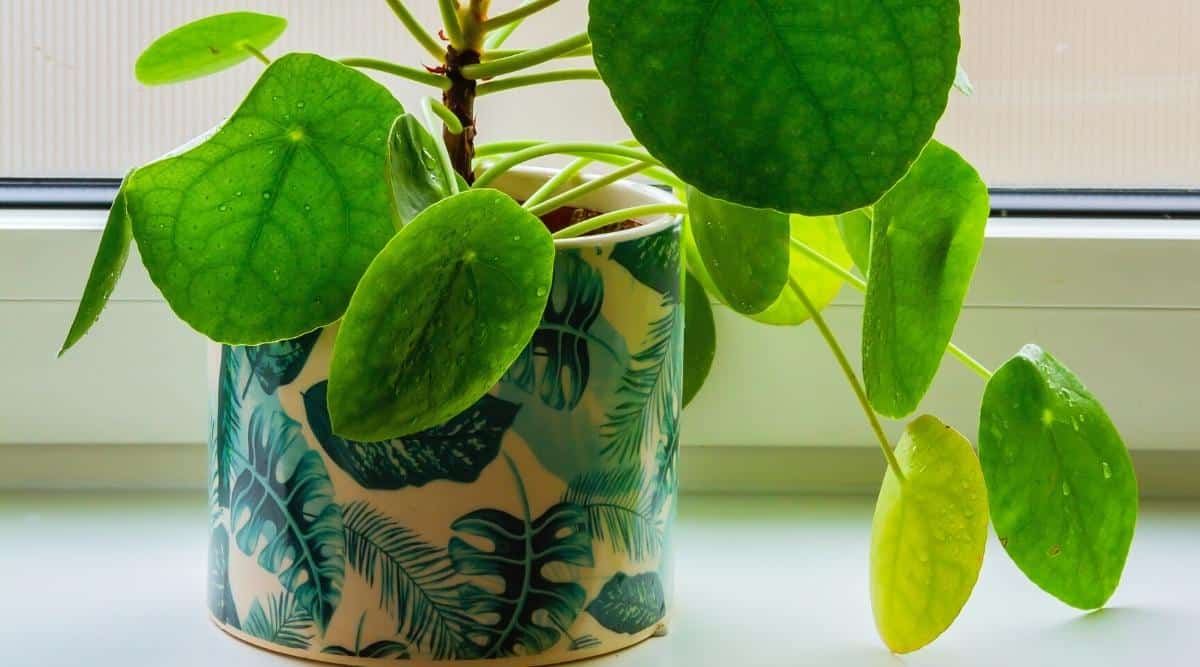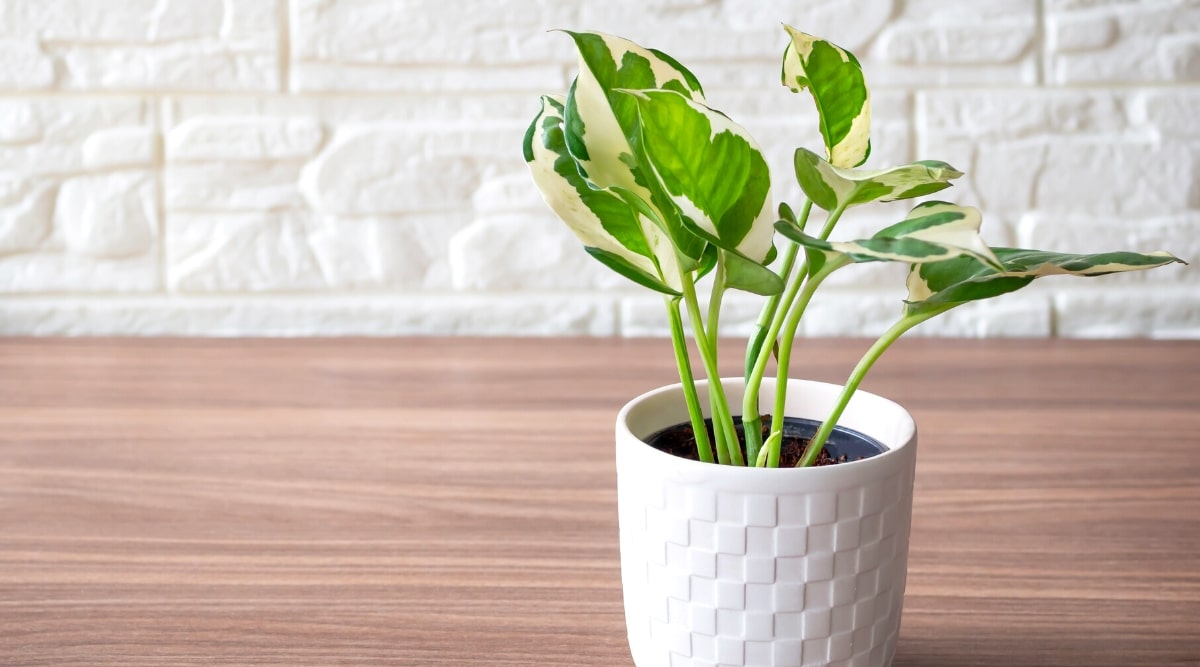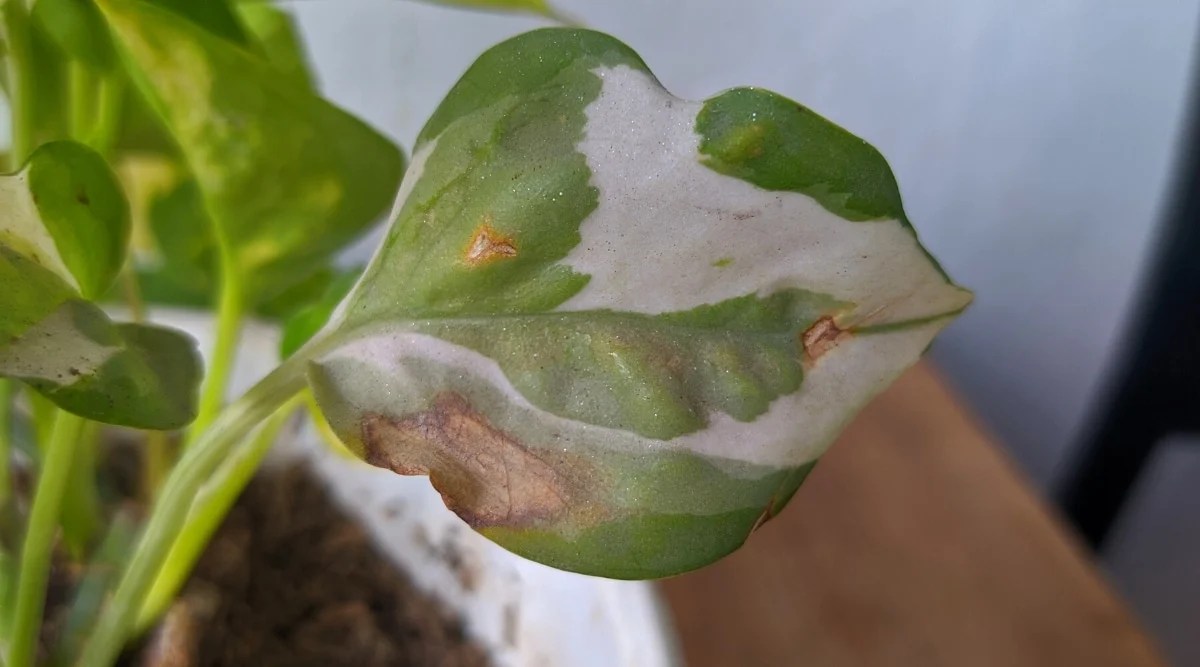houseplant
Looking to add a new broken - maintenance houseplant to your indoor plant collection ? The glacier golden pothos plant can make a heavy option , depending on your decor . In this clause , gardening expert Paige Foley looks at all you need to live about caring for this awful houseplant cultivar !
Contents

Pothos is a popular houseplant because of its beautiful leafage and repose of care . you could add many democratic pothos salmagundi to your houseplant collection , but one worth note is the Glacier Scindapsus aureus . This pothos can reach up to 6 - foot farsighted stem in the wild , but when container - grown , it tend to stay much diminished in size , establish it a capital accession to small place or apartments .
Glacier pothos is commonly confused with its congener , N’JoyandPearls and Jade pothos . They are all very similar , but the glacier pothos ’ colouration set it apart . This particular mixed bag does well in hanging baskets , tabletops , and cascading down bookshelves .
Before you run to your local garden pith or nursery search for the Glacier Scindapsus aureus , you should understand its concern motive . Luckily , the plant is fairly down in the mouth upkeep like other cultivar , but sympathise its needs will aid it survive for many years without fuss . We will look athow to plant , maturate and care for Glacier pothosfor felicitous and healthy plants . Let ’s get started .

Glacier Pothos Overview
How To Grow
Like other pothos varieties , Glacier pothos is easy to care for and broken criminal maintenance when provide the proper precaution . It is important to understand the plant ’s needs before you bring it into your care . The plant can outlive for year when pay the proper arise conditions . Below we hash out in detail all the necessary growing conditions for Glacier pothos .
Light
This pothos will do well in bright , collateral sunlightfor several hour a day . But due to its variegated leaves , it ca n’t tolerate humiliated light like other varieties of pothos . If your Glacier pothos is pose in too low of light , the stems will become leggy .
you could also start to turn a loss the variegation of the parting , which is less than ideal . The leaves can become scorch if the plant is expose to too much sunlight . They will mold brown or calamitous patches on the leaves , and growth will slow if divulge to acute sunlight .
localise your Glacier golden pothos near a south or east - facing window for ideal sunshine photo . Avoid placing them directly on a windowpane sill because of temperature change and draft .

Soil
Always utilise well - drain stain when planting your Glacier ivy arum . A good commixture is adequate office potting mix and perlite , both of which can be found at a local garden center field or nursery . Perlite will helpkeep the grime from becoming too compendious .
Compact soils can lead to root rot and decreased water retention . mucky soil is less than ideal for pothos and can stimulate damage to the works . If you are struggling with soggy soil , turn over repottingand adding new soil into the container .
Water
Although Epipremnum aureum prefer moist grime conditions , you should give up the top 2 to 3 inches to dry between watering . even watering will helpkeep the plant happy and healthy . Avoid overwatering as this can direct to root and stanch rots developing .
When watering , allow water to flow freely from the drainage holes . This is a great denotation of what is move through the full crapper and not just the first few inches . you may also raise the pot ; if it feels light , the plant life could use a drink .
Temperature and Humidity
Pothos are native to lovesome neighborhood and prefer temperature between 65 to 75 F. The plant is not icing resistant and will suffer if exposed to freezing temperatures . Keep this in mind when choosing a location for your Glacier pothos . window be given to provide bill of exchange and cold temperature to enter the home .
Glacier Scindapsus aureus can handle a home ’s stock humidness level if they do n’t overlook too low . Around 50 % and the plant will be glad . It can tolerate dispirited leaves of humidity , around 30 to 40 % . Glacier Scindapsus aureus makes a great addition to well - lit bathrooms due to the high humidness .
How To Plant
Planting Glacier pothos is easy to plant once you purchase from online or a garden center . you’re able to follow a few simple tone to ensure your pothos are well-chosen and healthy once you institute them in their new menage .
Step 1: Choosing the New Pot
Before you could begin planting your Glacier golden pothos , you must choose a pot to plant the Epipremnum aureum into . This might seem easy , but you ’ll want toensure the new container check up on a few boxesfirst .
The new pot needsdrainage holesto admit excess piss to drain from the container . This may seem unnecessary , but it will be helpful in the future and help foreclose the development of root rot . Now choose a breathable textile such as terracotta or ceramic . Finally , take a pot that is only an inch or two large than the plant .
Step 2: Gather Materials
Planting Glacier pothos is rather simple and does n’t require many cloth . You must assemble your containers , pot mix , gloved , and water . Choose a potting mix that is well - draining .
Step 3: Remove The Plant From the Previous Container
you may transplant once you have gathered all the cloth needed to constitute your pothos . Begin by transfer the industrial plant from the container it comes in . Be gentle when absent the plant , as the fore and roots break easily .
Once the plant is removed from the container , it is salutary to take away the soil from around the ascendent . The quondam filth may not be worthy for tenacious - terminus growth . Rinse the roots under room - temperature piss or lightly remove supererogatory soil with your finger .
Step 4: Planting and Care
Now that you have removed the soil from the industrial plant , you are ready to engraft in your fresh container . make full the new container partially with fresh potting soil . Place the plant on top of the ground andfill in excess space with wise potting soil . Keep the soil level even with the part of the plant it originally came up to ; do not implant it more deeply than before .
Water the plant thoroughly until weewee runs from the drain holes . Place in shiny , collateral sunlight for several hours a day . Monitor the industrial plant for organ transplant shock and correct maintenance consequently . Transplant shock is common , and your plant will most probably recover without any pregnant damage .
Maintenance
Although Glacier pothos is grim maintenance and requires very petty maintenance , they do good from routine care . Establishing a good fertilizer and pruning schedule can meliorate your flora ’s overall health during the active originate time of year .
Fertilizer
Applying a balanced plant food is great for Glacier pothos . Apply a fluid fertilizer or slow - freeing fertilizer during the spring and summer . A 5 - 5 - 5 plant food is ok for this purpose .
Liquid fertilizers can be applied monthly when the plant life is actively growing if diluted to the right forte . Be careful when practice synthetic or lab - derived liquid plant food because they can combust the leaves when hold over the leafage . Even with organic liquid fertilizer , it ’s best to apply these at the stem of the plant and not on the foliage .
dense - release plant food should be hold in the leap and then every 3 months or so after . Read the recording label on your fertiliser to influence how often you should reapply slow - release fertilizers .
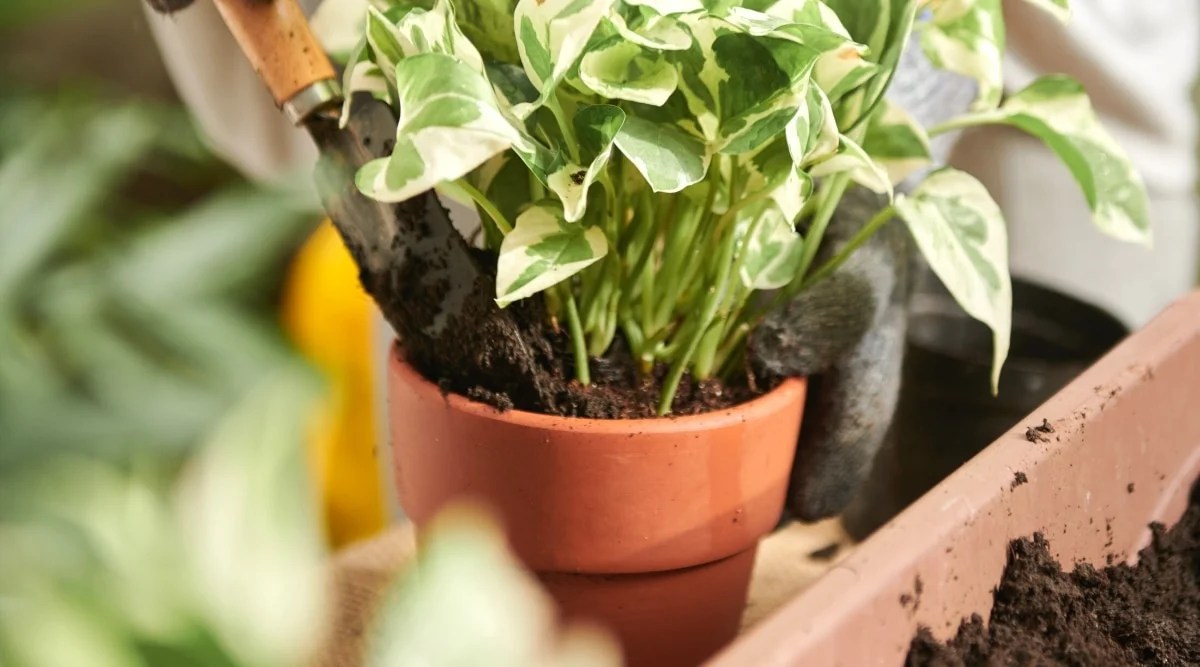
Pruning
Although pruning is n’t necessary for Glacier Scindapsus aureus , it can be done to control increase . Since the plant is slowly - growing , cut down must only be done a few times a year . The cut stems will not regrow as cursorily as other houseplant .
As the works develop , it can becomeleggy , which is a signaling that you must prune it . Leggy stems will be very long , with tumid spatial arrangement between the leaves towards the end of the vine . Find the spot where the leaves start to become very spaced ; this is where you make your cut .
When you bring down pothos , they do not ‘ branch ’ like other houseplants . Pothos will send out unexampled growth from the nearest node . From this node , the growth will proceed to vine like the relaxation of the industrial plant . More than one newfangled growing point will now and then appear , but this is rare .

Repotting
Since Glacier Pothos is very tardily - grow , you will not have to repot as often as other houseplants . Generally , you must repot every 2 to 3 years unless the plant shows sign of becoming rootbound . Signs of rootbound plant are root growing out of the drainage kettle of fish and radical encircle the inside of the tummy .
It is best to wait til spring or summertime to repot your Glacier golden pothos . This is when the plant is actively uprise and has a salutary chance of recover from transplant shock . When you ’re ready to repot your Glacier pothos , choose a container with proper drain holes . Drainage hole are important for the overall wellness of your pothos .
Next , choose a container2 to 3 inches larger than the previous container . If you choose a container that is too large , this can contribute to overwatering . Gently polish off the pothos from the premature container and set it in the new container with fresh potting dirt . piddle thoroughly and place it back in its original location .

Overwintering
There is no demand to provide exceptional care for your Glacier pothos during the winter month . If you keep the plant outdoors during the summer , bring it indoors before temperatures drop too low . If the plant is exposed to frost , it will most likely perish or be gravely damaged .
Stop fertilize your Glacier Epipremnum aureum begin in the fall and summarize fertilise in the natural spring . you’re able to prune if you consider it to be necessary , but the flora will not grow as speedily as it does in the springiness or summer . Continue to ply the same amount of sunlight and checker the filth to find if they need to be water .
Propagation
Like other pothos , Glacier pothoscan be easy propagatedfrom theme cuttings . spread is a great way to make the plant appear fuller and to create more of the plant you love . set about by identifying ahealthy stemfrom your Glacier pothos .
Cut the stem with clean , sharp shears so at least 3 to 4 folio nodes are on the stem . The clipping will have trouble rooting when there are fewer than 3 - 4 leaf node . Once you have the cut , remove the bottom 1 to 2 leaves from the stalk , leaving only a pocket-sized cluster at the tip of the stem . This discover the nodes , making it easygoing for the cutting to spring up roots .
Prepare a container with fresh water and place the theme cutting into the water container . Be sure that the top parting are above the surface of the piss . come in the container with the cutting off in bright , indirect sun . convert the water once per Clarence Day .

In a few weeks , you should notice roots growing from the nodes on the shank . Leave the stem in water until the roots are 1 to 2 inches long . Once they are long enough , you’re able to set the plant into the soil .
Prepare a small container with afully hydrated pot mixand gently plant the stem cutting into the soil . weewee the newspaper clipping well and turn back the cutting to the original bright , indirect location . Keep the grease moist for a few weeks after institute to help the flora adjust . After those few weeks , you may leave the soil to dry more between waterings .
Common Problems
When provided with the proper care , Glacier ivy arum seldom have issues . Many problem you encounter when growing Glacier Scindapsus aureus prow from their rise conditions . Luckily , growing conditions can be adjusted , and the plant tends to recoup quickly . Below are a few common trouble you could see when growing Glacier pothos .
Yellowing Leaves
If you are noticing yellow leaves on your Glacier pothos , it is most belike underwatered . But yellowing leave can betoken overwatering as well . start by checking the soil in your container for signs of under or overwatering . If the ground is dry to the touch , and you ca n’t find any wet in the top few inches , this is a sign of underwatering .
Overwatering is easy to distinguish . If you stick a finger in the pot and the grime is very sloshed and marshy , yellowing leaves are probably because of overwatering . The grease should be allowed to dry out 2 to 3 column inch below the filth aerofoil . Once those few inches are dry , you could water again .
Curling Leaves
Curling leaves are a groovy foretoken that yourplant needs to be water . Once you give your plant life a crapulence of water , the leaf should uncurl and give back to normal . The plant can endure dry soils , so they are rather forgiving if you block to irrigate for a while . Be careful with curled leaves that begin to wrick brown or yellow . Changing colors is a good indication to take action quickly .
Stunted Growth
Glacier Scindapsus aureus is naturally slowly - uprise and takes prison term for new growth to develop . Depending on the time of year , you may not see much growth at all . scrawny growth is n’t always an meter reading that something is wrong . But if it ’s the participating growing time of year for Glacier Pothos andyou have n’t seen new growth , this can be a problem .
Lack of light can cause the plant to be stunted , and you should move the plant to a brighter emplacement . Once you move the works , you should see newfangled growth within a month or so . Also , give the flora a encouragement by applying fertilizer can aid initiate new ontogeny .
Pests And Diseases
Like most houseplants , Glacier golden pothos can experience pest and disease . Pests incline to assault weak flora , so right care will aid keep the plant dependable from gadfly . Common pests on Glacier Scindapsus aureus aremealy bugs , aphids , andspider mite . Most of these can be treated with an insecticidal soap or a misting of neem oil .
A vulgar disease is stem turn and root rot , which grow in overwatered grime . This fungous pathogen can be forestall by ensuring your grime drain well enough and does not stay soggy , as overly - wet soil can push fungous development . Fungal leaf smirch can also go on ; if these are establish , snip off the damage farewell and use a copper fungicide on the foliage . Be careful to leave at least two weeks between intervention for pests and diseases so you do n’t duplicate - up on the leafage - aerofoil treatments .
Frequently Asked Questions
Since Glacier Pothos are tight related to Pearl & Jade and N’Joy pothos varieties , they can be difficult to tell apart . Glacier pothos tends to have a silverish - grey mottling or streak on the leaf . This is the easiest way to tell Glacier Scindapsus aureus from other change .
Glacier golden pothos is n’t as vulgar as other pothos such as Golden or Satin Epipremnum aureum . It is considered to be fairly rare and you’re able to have luck find at a local garden center or nursery . you may also buy online but make certain you are buy from a reputable seller .
Yes , Glacier Scindapsus aureus is toxic and should be kept out of reach of pets and pocket-size children .

Final Thoughts
Glacier pothos makes a great addition to any family , whether you are a tyro or an experient plant proprietor . This particularpothos varietyis great for low spaces because it only reaches a max duration of 6 feet . invest the plant in a hanging basket or all of it to cascade down a shelf . You will sure love the plant ’s beautiful variegated leave of absence and rest of care .


